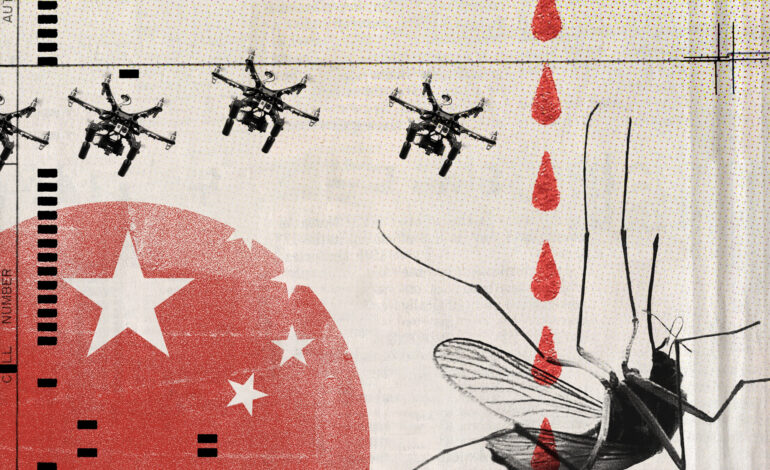China Deploys Innovative Tactics to Combat Chikungunya Virus

Public health officials in China are implementing a range of innovative methods to combat the chikungunya virus, which has recently caused over 10,000 infections in the southern province of Guangdong. Following the identification of thousands of cases, authorities are employing traditional measures alongside novel tactics to contain the outbreak and protect the population.
Innovative Approaches to Contain the Virus
The chikungunya virus, transmitted primarily by Aedes mosquitoes, has prompted Chinese health officials to use giant predatory mosquitoes known as elephant mosquitoes. These “compulsive killers” can consume thousands of Aedes mosquito larvae, significantly reducing the population of the disease-carrying insects, according to a study published in the Journal of Tropical Medicine.
In addition to this biological approach, researchers at Sun Yat-sen University have introduced 5,000 larvae-eating fish into local water bodies. These fish are tasked with consuming mosquito larvae that hatch in the city’s lakes. As the virus spreads, insecticides are also being widely used, with reports of masked soldiers spraying chemicals in various urban areas, including streets, residential neighborhoods, and construction sites, as detailed by The Associated Press.
The recent combination of heavy rain and high temperatures has exacerbated the situation, leading authorities to employ drones for surveillance. These drones are designed to locate standing water where mosquitoes breed, helping to identify areas that require immediate intervention. Community workers, identifiable by their red vests, are conducting door-to-door inspections, urging residents to eliminate standing water, including pet water bowls, to minimize breeding sites.
Understanding Chikungunya and Its Impact
First identified in Tanzania in 1952, the chikungunya virus is now present in over 110 countries, particularly in sub-Saharan Africa, Southeast Asia, and South America. The name “chikungunya” is derived from a Swahili term meaning “to bend over,” reflecting the debilitating joint pain often associated with the infection. Although rarely fatal, chikungunya can lead to severe symptoms, including fever, rash, and debilitating joint pain, particularly affecting vulnerable populations such as newborns, the elderly, and individuals with pre-existing medical conditions.
As of last week, an additional 1,387 cases of chikungunya were reported in China, as highlighted by the Daily Mail. This brings the total number of infections to over 10,000, including reported cases in Taiwan, Hong Kong, Europe, and the United States. Despite the alarming numbers, the recent weekly tally of new cases has shown a decline from 2,892 to 1,387, suggesting that the outbreak may be stabilizing.
China’s comprehensive approach to controlling the chikungunya virus highlights the importance of adapting public health strategies to manage emerging infectious diseases. As authorities continue to confront this latest health challenge, the combination of traditional measures and innovative tactics serves as a critical component of their response.






